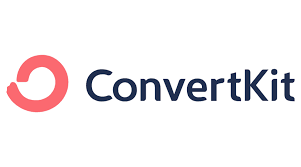Hello there! If you’re caught in the whirlwind of choosing between ConvertKit and Moosend as your go-to email marketing tool for 2024, you’ve landed in the perfect spot. This isn’t just a run-of-the-mill comparison; we’re diving deep into the heart of these platforms to help you make an informed, savvy decision that’s right for your business. So, let’s get this show on the road!
| ConvertKit | Moosend |
|---|---|
 |  |
| G2 Score – 4.4 out of 5 stars | G2 Score – 4.6 out of 5 stars |
| TrustRadius Score – 8.8 out of 10 | TrustRadius Score – 9.8 out of 10 |
Ease of Use: The User Experience Showdown
In the fast-paced world of email marketing, the ease of use of a platform isn’t just a nice-to-have; it’s essential. You want a tool that’s more of a helping hand than a headache. Let’s break down how ConvertKit and Moosend fare when it comes to user-friendliness.
ConvertKit: Simplicity for Creators
ConvertKit has been a darling for bloggers, creators, and small businesses, primarily due to its simplicity. From the moment you step into its world, you’re greeted by an intuitive, no-frills interface that feels like a warm handshake. Setting up your first email campaign isn’t a labyrinthine process; it’s straightforward and clear.
What truly sets ConvertKit apart is its commitment to uncomplicatedness. The platform takes the complex world of email marketing and makes it digestible. Whether you’re crafting an email, setting up a sales funnel, or segmenting your audience, it feels less like rocket science and more like storytelling.
Moosend: Flexibility for the Masses
Moosend steps up to the plate with a slightly different approach. It caters to a broader audience, ranging from small businesses to larger enterprises. While it maintains a user-friendly experience, Moosend brings a bit more complexity to the table – but in a good way.
The platform offers a more extensive range of features and customization options, which is great if you love having more tools in your toolkit. The drag-and-drop email editor is a playground for creativity, allowing you to design emails that resonate with your brand’s voice. And for the data enthusiasts, Moosend’s real-time analytics are like having a crystal ball, giving you insights into your campaign’s performance.
The Verdict on User Experience
If simplicity is your game, ConvertKit is your name. It’s perfect for those who want to get their email campaigns up and running without getting tangled in complexity. On the other hand, if you’re seeking a platform that offers a bit more elbow room for creativity and analytics, Moosend might just be your match.
Deliverability: Ensuring Your Emails Reach Their Destination
When it comes to email marketing, deliverability is the name of the game. It’s crucial that your carefully crafted emails actually make it to your audience’s inbox. Let’s dive into how ConvertKit and Moosend stack up in ensuring your message gets where it needs to go.
ConvertKit: Reliable and Trustworthy
ConvertKit has garnered a reputation for its strong deliverability rates. This is largely due to their stringent adherence to email best practices and a robust infrastructure that maintains a clean sender reputation. ConvertKit takes the guesswork out of deliverability with features like automated link checking and spam score assessments, helping to flag potential issues before hitting send.
What’s more, ConvertKit’s approach to audience engagement – focusing on genuine interactions rather than just numbers – plays a key role in maintaining high deliverability. Their analytics provide insights into open rates and engagement, allowing you to fine-tune your approach for better inbox placement.
Moosend: Sophisticated and Adaptive
Moosend steps up to the deliverability challenge with its advanced email sending infrastructure. They use machine learning algorithms to optimize sending times and email delivery, which helps in avoiding the spam folder and increases the likelihood of your emails being opened.
An added advantage of Moosend is its segmentation capabilities, which allow for highly targeted emails. By sending relevant content to segmented groups, your engagement rates are likely to be higher, positively impacting your overall deliverability. Moosend also offers detailed reports on delivery, open, and click-through rates, providing valuable insights for ongoing optimization.
The Verdict on Deliverability
Both ConvertKit and Moosend offer robust solutions for email deliverability, but their approaches differ. ConvertKit’s strengths lie in its user-friendly tools and focus on building genuine audience relationships, making it an excellent choice for creators and small businesses. Moosend, with its advanced technologies and detailed segmentation, is well-suited for those who require a more sophisticated approach to deliverability, particularly useful for businesses with larger and more diverse email lists.
Pricing and Affordability: Getting the Most Bang for Your Buck
Let’s face it, when selecting an email marketing tool, your budget plays a crucial role. It’s not just about picking the cheapest option, but finding a service that offers the best value for your investment. Let’s compare the pricing models of ConvertKit and Moosend to see which one aligns best with your financial and marketing needs.
| ConvertKit | Free Plan: Offers basic features for up to 1,000 subscribers, including email broadcasts, landing pages, and forms. Creator Plan: Starting at $29/month for up to 1,000 subscribers, including automation and third-party integrations. The price increases with more subscribers. Creator Pro Plan: Starting at $59/month for up to 1,000 subscribers, adding advanced features like newsletter referral system, subscriber scoring, and advanced reporting. |
| Moosend | Free Plan: Offers access to basic features for up to 1,000 subscribers, including email campaigns, automation, and landing pages. Pro Plan: Pricing starts at $8 per month for up to 2,000 subscribers, with unlimited emails. Includes advanced features like transactional emails, landing page builder, and phone support. The price scales with the number of subscribers. Enterprise Plan: Custom pricing for businesses needing custom features like account management, SSO (Single Sign-On), and more. |
ConvertKit: Transparent Pricing for Creators and Entrepreneurs
ConvertKit’s pricing structure is designed with simplicity and scalability in mind. They offer a free plan, which is great for beginners or those with a smaller audience. As your subscriber base grows, you can move to their paid plans, which are tiered based on the number of subscribers.
One of the key advantages of ConvertKit’s pricing is its transparency. You know exactly what you’re paying for at each tier, and there are no hidden costs. This predictability is a huge plus, especially for small businesses and independent creators who need to manage their budgets carefully.
Moosend: Flexible Pricing for Businesses of All Sizes
Moosend takes a slightly different approach to pricing. They also offer a free plan, but their paid plans are more flexible, allowing businesses of all sizes to find a suitable option. Moosend’s pricing is based on the number of subscribers, with the cost scaling as your list grows.
What sets Moosend apart is the range of features available at each pricing tier. Even at lower tiers, you have access to most of their advanced features, making it a cost-effective option for small to medium-sized businesses looking for a comprehensive email marketing tool without breaking the bank.
The Verdict on Pricing
When it comes to pricing, both ConvertKit and Moosend offer competitive options. ConvertKit is ideal if you’re looking for a straightforward, scalable pricing model, especially suited for creators and small businesses. Its clear-cut tiers make it easy to understand what you’re paying for as your needs grow. Moosend, with its flexible and feature-rich pricing tiers, is an excellent choice for businesses that need advanced features but are also mindful of budget constraints. Its cost-effectiveness makes it a compelling option for a broader range of businesses.
Integration and Compatibility: Enhancing Your Marketing Ecosystem
In the digital marketing age, the ability to integrate your email marketing tool with other applications and services can significantly amplify your marketing efforts. Seamless integration can streamline workflows, enhance data collection, and provide a more unified marketing strategy. Let’s see how ConvertKit and Moosend stack up in terms of integration and compatibility.
ConvertKit: Streamlined Integrations for Creators
ConvertKit offers a range of integrations that are particularly beneficial for bloggers, creators, and small businesses. It seamlessly connects with popular platforms such as WordPress, Shopify, and WooCommerce, enabling easy synchronization between your website or e-commerce store and your email marketing activities.
Apart from these, ConvertKit also integrates with various lead capture tools and landing page builders, enhancing your ability to grow your email list and manage your leads effectively. For analytics and CRM, ConvertKit connects with services like Google Analytics and Salesforce, offering a broader view of your marketing efforts and subscriber interactions.
Moosend: Diverse Integrations for Varied Needs
Moosend, on the other hand, takes a broader approach in its integration capabilities, catering to a wide range of business needs. It integrates with a variety of CRM systems, e-commerce platforms, and other marketing tools, making it a versatile choice for businesses operating in different sectors.
Moosend’s integration options include popular e-commerce platforms like Magento and Shopify, CRM systems such as Salesforce, and productivity tools like Zapier. This extensive range of integrations allows Moosend to adapt to various marketing tech stacks, supporting comprehensive, multi-channel marketing strategies.
The Verdict on Integration and Compatibility
Both ConvertKit and Moosend offer strong integration capabilities, but they cater to different user bases. ConvertKit is ideal for content creators and small businesses, offering integrations that support direct audience engagement and content monetization. Its integrations are focused and specifically tailored to the needs of creators and small entrepreneurs. Moosend, with its wide array of integrations, is more suited for larger businesses or those with diverse and complex marketing needs. Its ability to connect with a variety of systems and platforms makes it a versatile choice for businesses looking to integrate their email marketing efforts with a broader marketing ecosystem.
Analytics and Reporting: Gaining Insightful Data for Strategic Decisions
Effective analytics and detailed reporting are indispensable in email marketing, providing the insights needed to tailor strategies and enhance engagement. Let’s delve into how ConvertKit and Moosend provide analytics and reporting capabilities to inform your marketing decisions.
ConvertKit: Simplified Analytics for Actionable Insights
ConvertKit offers analytics that are both accessible and insightful. The platform provides a clear overview of key metrics such as open rates, click-through rates, and subscriber growth. This simplicity is particularly beneficial for users who need quick insights to inform their email marketing strategies.
A unique aspect of ConvertKit’s analytics is its focus on subscriber engagement. The platform allows you to track individual subscriber interactions with your emails, offering the ability to segment your audience based on their behavior. This level of detail is especially useful for creators and small businesses looking to cultivate a strong, engaged community.
Moosend: Comprehensive Reporting for In-Depth Analysis
Moosend takes a more comprehensive approach to analytics and reporting. It offers a broad range of reports covering various aspects of your email campaigns, from general performance metrics to detailed analyses of subscriber behavior and engagement patterns.
Moosend’s strength lies in the depth of its reporting capabilities. You can dissect the effectiveness of different elements of your emails, such as subject lines and content. This in-depth analysis is invaluable for businesses looking to optimize every aspect of their email marketing. Additionally, Moosend’s A/B testing feature allows you to compare different versions of your emails, providing concrete data to guide your campaign decisions.
The Verdict on Analytics and Reporting
Both ConvertKit and Moosend offer valuable insights through their analytics and reporting features, but they cater to different needs. ConvertKit is ideal for those seeking straightforward, easily digestible analytics, particularly suited for creators, bloggers, and small businesses. On the other hand, Moosend offers more detailed and comprehensive reporting, making it a great option for larger businesses or those with a data-driven approach to marketing. The platform’s in-depth analytics provide the tools necessary for a nuanced understanding of email campaign performance.
Customer Support and Resources: Guiding Your Email Marketing Journey
Reliable customer support and a wealth of educational resources can significantly impact your experience and success with an email marketing tool. Whether you’re a beginner needing guidance or an experienced marketer looking for advanced tactics, the support and learning materials provided are crucial. Let’s explore the customer support and resources offered by ConvertKit and Moosend.
ConvertKit: Personalized Support and Creator-Centric Resources
ConvertKit excels in providing personalized customer support. Their range of support channels includes email, live chat, and a comprehensive knowledge base. ConvertKit’s support team is known for being responsive and helpful, providing detailed and tailored assistance.
In addition to their support channels, ConvertKit offers a rich array of educational resources targeted towards creators and small businesses. Their resources include detailed guides, webinars, and a blog filled with practical tips on email marketing, content creation, and audience building. These resources are particularly beneficial for users looking to deepen their engagement with their audience and grow their online presence.
Moosend: Extensive Support and Diverse Educational Materials
Moosend offers robust customer support that caters to a wide range of user needs. They provide support through email, live chat, and phone, ensuring users can access help in various ways. Moosend’s support team is praised for its efficiency and depth of knowledge.
Moreover, Moosend provides an extensive library of educational resources. This includes comprehensive guides, video tutorials, and webinars that cover a broad spectrum of topics from basic email marketing concepts to advanced strategies. These resources are valuable for businesses of all sizes, offering insights and knowledge for both beginners and advanced users.
The Verdict on Customer Support and Resources
Both ConvertKit and Moosend offer excellent customer support and a wealth of educational resources. ConvertKit’s personalized support and creator-focused resources make it an ideal choice for individual creators, bloggers, and small businesses. Their support and resources are tailored to help users effectively grow their audience and enhance their online marketing efforts. Moosend, with its broad support and diverse educational materials, is well-suited for a wider range of businesses. Their comprehensive resources cater to various levels of expertise and a wide array of email marketing needs.

Related: Check out our free SEO suite

Automation and Workflow Efficiency: Enhancing Email Campaign Management
Automation features in an email marketing tool can significantly boost the efficiency and effectiveness of your campaigns. By automating repetitive tasks and tailoring messages to specific audience segments, you can enhance engagement and save valuable time. Let’s compare the automation and workflow efficiency of ConvertKit and Moosend.
ConvertKit: Streamlined Automation for Creators
ConvertKit offers automation features that are intuitive and easy to use, making it a favorite among bloggers, creators, and small businesses. Its visual automation builder allows you to create complex email sequences with a simple, drag-and-drop interface. This tool is particularly useful for setting up automated workflows like welcome sequences, nurture campaigns, and sales funnels.
What sets ConvertKit apart in automation is its focus on simplicity and effectiveness. The platform enables you to segment your audience based on their interactions and tailor your communications to meet their specific interests and needs, all without overwhelming you with complexity.
Moosend: Advanced Automation for Dynamic Marketing
Moosend steps up with more sophisticated automation capabilities, catering to businesses that require a more robust approach to email marketing. The platform provides detailed automation workflows that include triggers based on subscriber behavior, time-based actions, and complex segmentation.
The strength of Moosend’s automation lies in its flexibility and depth. You can create highly customized paths for different segments of your audience, ensuring that each subscriber receives the most relevant and engaging content. This level of detail makes Moosend a powerful tool for businesses looking to execute intricate, dynamic email marketing strategies.
The Verdict on Automation and Workflow
ConvertKit and Moosend both offer strong automation features, but they cater to different needs. ConvertKit’s user-friendly automation tools make it an excellent choice for those who value simplicity and effectiveness in their email marketing efforts. It’s ideal for creators and small businesses that want to build personalized relationships with their audience without getting bogged down in technicalities. Moosend, with its advanced automation capabilities, is better suited for larger businesses or those with more complex marketing needs. Its ability to handle detailed and dynamic automation workflows provides the flexibility and control needed for sophisticated email marketing campaigns.
Email Design and Customization: Crafting the Perfect Email
The visual appeal and customization of your emails play a critical role in engaging your audience. A good email marketing tool should not only offer a variety of design options but also allow for personalization to resonate with your subscribers. Let’s compare how ConvertKit and Moosend stack up in terms of email design and customization.
ConvertKit: Simplified Design with a Personal Touch
ConvertKit approaches email design with a focus on simplicity and personalization. It offers a range of customizable templates that are clean and minimalistic, ensuring that your content is the star of the show. This approach aligns with ConvertKit’s ethos of catering to creators and small businesses, where the message often takes precedence over flashy design.
The platform’s email editor is user-friendly, allowing you to easily modify templates to suit your brand’s style. While ConvertKit may not offer the same level of design complexity as some other platforms, its strength lies in its ability to create personalized, content-focused emails with ease.
Moosend: Creative Freedom with Advanced Customization
Moosend offers a more advanced email design experience. Its email editor provides extensive customization options, giving you the creative freedom to design emails that fully align with your brand’s aesthetic. With a wide range of templates and the ability to edit HTML/CSS, Moosend caters to users who desire more control over their email design.
An additional strength of Moosend is its focus on interactive email elements, like countdown timers and image carousels, which can significantly boost engagement. The platform also supports dynamic content, allowing you to personalize emails based on subscriber data, making each email feel tailor-made for the recipient.
The Verdict on Email Design and Customization
When it comes to email design and customization, ConvertKit and Moosend serve different preferences and needs. ConvertKit is ideal for those who prioritize straightforward, content-focused email designs. Its templates and editor are user-friendly, making it accessible to those without extensive design skills. Moosend, meanwhile, is a better fit for users looking for more advanced design capabilities and a higher degree of creative control. Its robust editor and interactive features provide the tools necessary for crafting highly customized and engaging emails.
List Management and Segmentation: Mastering Targeted Campaigns
Effective list management and segmentation are crucial for targeted and personalized email marketing campaigns. By organizing your subscribers and tailoring content to specific groups, you can increase engagement and conversion rates. Let’s delve into how ConvertKit and Moosend handle list management and segmentation.
ConvertKit: Intuitive List Management for Personalized Engagement
ConvertKit offers a streamlined approach to list management and segmentation. The platform is designed with the understanding that each subscriber is unique, and hence, provides tools to segment your audience based on their interests, behavior, and interaction with your emails.
ConvertKit’s tagging and segmentation features allow you to categorize subscribers not just by demographic data but also based on their actions, such as email opens, link clicks, and purchase history. This level of detail enables you to send highly targeted and personalized emails, increasing the relevance of your content and the likelihood of engagement.
Moosend: Advanced Segmentation for Dynamic Campaigns
Moosend takes segmentation a step further, offering advanced options to tailor your email campaigns. With Moosend, you can segment your lists based on a wide range of criteria, including subscriber behavior, engagement patterns, and custom fields.
One of the standout features of Moosend’s list management is its real-time tracking and segmentation. This allows you to dynamically update your segments based on subscriber interactions, ensuring that your campaigns are always targeted to the most relevant audience. Moosend’s segmentation capabilities are particularly beneficial for businesses with larger or more diverse email lists, as they allow for more granular and sophisticated targeting.
The Verdict on List Management and Segmentation
Both ConvertKit and Moosend excel in list management and segmentation, but they cater to different needs. ConvertKit’s straightforward and intuitive approach is ideal for creators, bloggers, and small businesses that require an easy way to personalize their communications and build a strong connection with their audience. Moosend, with its advanced segmentation capabilities, is well-suited for businesses that need to manage large, diverse email lists. Its dynamic segmentation and comprehensive criteria make it a powerful tool for businesses looking to execute complex, data-driven email marketing strategies.
Conclusion
In conclusion, when deciding between ConvertKit and Moosend as your email marketing tool for 2024, consider your specific needs and business goals. ConvertKit stands out for its simplicity and user-friendly interface, making it an excellent choice for creators, bloggers, and small businesses. Its intuitive design, personalized engagement features, and effective list management cater well to those who value straightforward and impactful email marketing. On the other hand, Moosend offers advanced capabilities in automation, email design customization, and segmentation. It’s ideal for larger businesses or those requiring more sophisticated, data-driven marketing strategies. Moosend’s dynamic segmentation and extensive customization options make it a powerful tool for targeted and engaging campaigns.
Both platforms offer robust deliverability, competitive pricing, and valuable analytics, but your choice should be guided by your business scale, technical proficiency, and specific marketing objectives. Whether you prioritize ease of use or comprehensive features will determine the best fit between ConvertKit and Moosend for your email marketing needs in 2024.
Read Next
- The Role of Visuals in Email Marketing: Enhancing Engagement with Images and GIFs
- Email Marketing for Subscription-Based Services
- Crafting Compelling Email Subject Lines: Tips and Tricks for Higher Open Rates
- The Importance of Deliverability in Email Marketing: Ensuring Your Messages Reach the Inbox
- Email Marketing for Events and Webinars: Boosting Attendance and Engagement





















